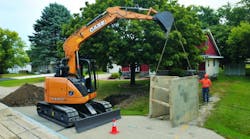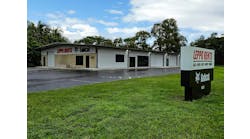The value of new construction starts increased 10 percent from March to April at a seasonally adjusted annual rate, Dodge Data & Analytics (formerly McGraw Hill Construction) reported last week, based on data it collected. The nonresidential building sector came in particularly strong [up 58 percent from March], lifted by the inclusion of two massive projects in early April — an $8.1 billion petrochemical plant in Louisiana and a $1.2 billion office/retail high-rise in New York [City].
Meanwhile, residential building slipped 3 percent in April, and nonbuilding construction lost momentum [-17 percent] as the result of a pullback by public works. Through the first four months of 2015, total construction starts on an unadjusted basis were up 24 percent from the same period a year ago.
“The presence of unusually large projects in early 2015, particularly several liquefied natural gas [terminals and] petrochemical plants, has elevated the level of activity shown by total construction starts beyond the underlying trend,” said chief economist Robert Murray. “It’s also increased the volatility on a month-to-month basis, with total construction up 16 percent in February, down 13 percent in March, and now up 10 percent in April. Despite these wide swings on a monthly basis, it’s still possible to identify several aspects of how the construction expansion is proceeding in 2015.
“For nonresidential building, the upturn is broadening in scope, with its institutional segment continuing the upward movement established in 2014. For residential building, single-family housing has shown some improvement yet remains hesitant, while multifamily housing is generally proceeding at a healthy clip. For nonbuilding construction, the electric power and gas plant segment has provided a substantial near-term boost that will soon recede, while public works is beginning to face constraints after surprisingly resilient activity in early 2015.”
Housing starts jumped 20 percent from March to April to a seasonally adjusted annual rate of 1,135,000, the highest since November 2007, the Census Bureau reported on Tuesday. The monthly rate probably reflected, in part, a rebound from bad weather in parts of the country in the winter. Thus, the year-to-date total of starts in January through April combined, compared with the same months of 2014, might more accurately reflect underlying trends. Overall, starts increased 5.5 percent year-to-date, with single-family starts rising 7.6 percent and multifamily (buildings with five or more units) starts edging up 1.1 percent. Building permits, a fairly reliable predictor over time of near-term starts, especially single-family, rose 8 percent year-to-date for both building types.
More apartment construction is for luxury units than in the past, the Wall Street Journal reported on May 21. “Of 370,000 multifamily rental units completed from 2012 to 2014 in 54 U.S. metropolitan areas, 82 percent were in the luxury category [defined as those that command rents in the top 20 percent of a market], according to CoStar Group Inc., a real-estate research firm.”
The “construction pipeline” for U.S. hotels under construction, scheduled to start in the next 12 months, or in early planning “stands at 3,885 projects/488,230 rooms and has shown seven consecutive quarters of growth, with the last three quarters posting year-over-year gains of 20% or greater,” consultancy Lodging Econometrics reported on Tuesday, based on data it collected. “The pipeline is approximately half-way through the expansion phase of the current real-estate cycle but is still a third below the peak of 5,883 projects/785,547 rooms established in the first quarter of 2008. The Pipeline has at least two more years of rapid growth ahead before entering the maturity, or ‘topping out,’ phase of the cycle.” The top three markets for U.S. hotel construction are New York, Houston and Washington, D.C., the firm said.
The National Highway Construction Cost Index, a measure of the cost of all projects awarded by states, declined 1.7 percent in December 2014 from September 2014 but increased 3.1 percent from December 2013, according to data the Federal Highway Administration posted on May 15. The decrease in the fourth quarter partially reversed a jump of 3.2 percent from June to September.
“Each of the 15 fastest-growing cities between 2013 and 2014 were in the South or West, as were all but two of [the] top 15 numerical gainers,” Census reported on Thursday in releasing July 1, 2014, population and housing-unit estimates for all local governmental units. The data are good predictors over time of demand for many types of construction. The “estimates show that Texas gained more housing units than any other state…(141,625), with North Dakota experiencing the fastest rate of growth in the number of units (3.0 percent). Among counties with at least 5,000 housing units, Williams, N.D., added units at the fastest rate over the period” (11.6 percent).
“Emerging regional and suburban growth patterns suggest that both cities and suburbs in the Sunbelt region will be growing more rapidly,” Brookings Institution demographer William Frey wrote today in an analysis of the Census data. “And despite the recent growth slowdowns, big cities almost everywhere are growing more rapidly than in the recent past. Yet the continued growth of large coastal and northern cities well beyond levels in the recent past can still not be assured. We will need a few more years to monitor this as the job and housing markets regain strength.”
[Information provided by Associated General Contractors of America]








